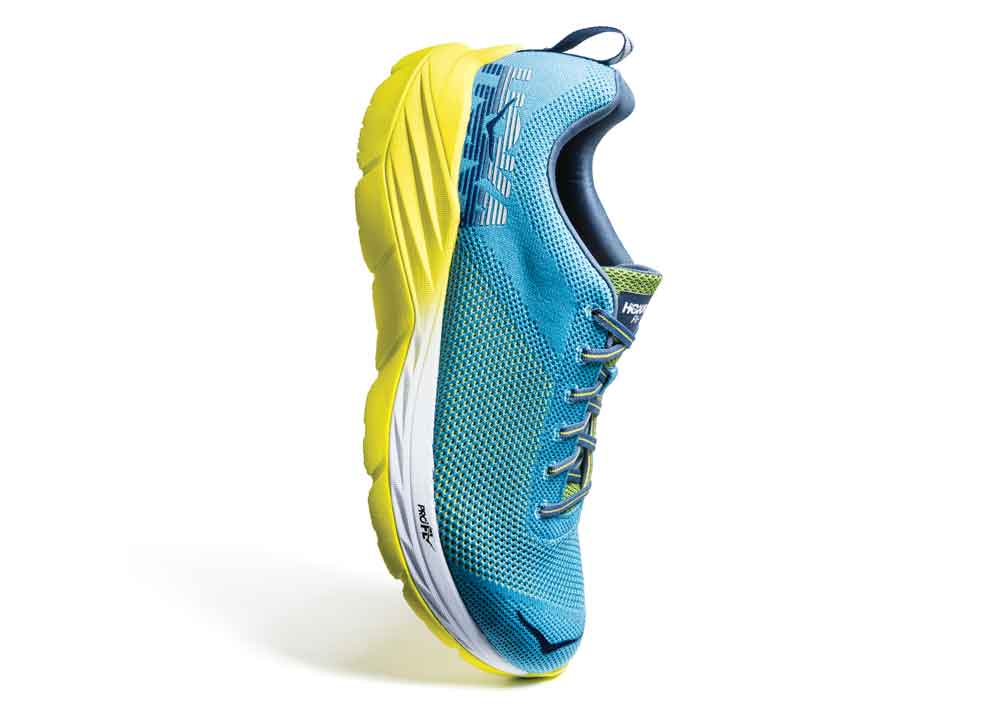Could Foam-Soled Running Shoes Be Perfect for Triathletes?

Photo: Oliver Baker
Shoe manufacturers are obsessed with foam soles, should we be too?
Triathletes are generally not big fans of the squish. A squishy chamois on the bike? Gross. Touching something nebulous but squishy in the water? Even grosser.
But shoe manufacturers want triathletes to embrace the squish. At least for the run. Sneakers with foam soles are popping up in major brands’ product offerings, from Nike’s React Foam to Under Armour’s HOVRs, and New Balance’s Fresh Foam line. So why the proliferation?
In part, it’s because brands cannot ignore the success of HOKA One One, the OG of the squish shoe gang. “Foam and geometry are the essential elements of HOKA and have been from the start,” says Gretchen Weimer, global vice president of product for HOKA. And it’s worked. According to the industry publication Footwear News, the brand has seen double-digit growth since its launch.
There has also been considerable advancement in polymer and molecular technologies in the past 10 years, according to Justin Howe, a footwear designer who worked on UA’s new HOVR line. “Ten years ago, there were some compromises that had to be made that we don’t have to make now,” he explains. For example, you could design a foam that was lightweight or one that was durable, but not both. Not so anymore.
Howe says companies like Dow Chemical are mixing innovative new foam “recipes.” He compares the process to baking. One formulation might end up like an angel food cake, while another is more like a fudge brownie. Finding the sweet spot—where the shoe absorbs shock but also has the perfect amount of energy-returning rebound—is the trick. “Foam development is extensive and takes all sorts of scientists, chemists, and developers to execute,” says Claire Wood, the performance running product manager at New Balance.
But when done right, it creates a pretty cool shoe. The perfect foam shoe should do a few things: First, it should blunt the impact of every footfall. In a 2008 study published in the Journal of The American Podiatric Association, researchers found that just adding a tiny amount of foam in the form of an insole significantly blunted foot and leg impact while running, so the benefit is real.
Next, it should help spring you forward via something shoe companies like to call energy return. The idea here is that when a traditional shoe—which is generally made of layers of polyurethane, rubber, and maybe even a small layer of foam—compresses under your foot, it zaps a bit of energy in the process. With a foam shoe—which doesn’t behave the same way when compressed— less energy is lost on impact. While it’s not actually springing you forward it feels a bit like it is, thus the term “energy return.”
Just how much energy return and shock absorption a foam shoe can provide is up for debate.
Still, manufacturers are working to quantify it. In January 2018, Nike issued a press release boasting its newest foam running shoe, the Nike React, which the company said gave runners 13 percent more energy return than its previous foam offerings. Thirteen percent more spring in your step, for every step over the course of 13.1 or 26.2, could be significant—especially on tired bike legs.